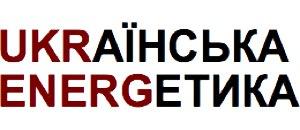Another problem is the absence of sectoral standards and criteria for key phases of the EIA procedure (report, opinion). According to the Law, the Ministry of Energy and Environmental Protection is responsible for regulatory and methodological support and standardization of EIA reports. Presently, compliance with this provision of the Law is ensured via consultations provided by the Ministry’s personnel to businesses. The absence of standards and criteria to determine how serious the environmental impact from extraction operations is creates a room for manipulations for all parties involved in the EIA procedure: the company and the authority issuing a permit. The implementation of sectoral standards for reports and opinions concerning extraction of raw materials (for different types of extractable resources and different types of activity) may become a possible solution. For example, the EU has adopted guideline documents concerning organization of EIA at various stages: screening, scoping, preparation of an EIA report. The first steps in this direction were taken in Ukraine as well. On 2 March 2020, the Ministry of Energy and Environmental Protection approved the Methodological recommendations concerning development of environmental impact assessment reports in the forestry sector, which was developed to improve the quality of EIA reports. A similar document would have been useful for the extractive sector as well. Finland, for example, has developed a manual on EIA for raw materials extraction projects.
The absence of requirements to persons/companies preparing draft EIA reports creates certain misunderstandings in this regard. These reports have a complex structure, and therefore, they must be prepared by qualified specialists, but presently, there are no requirements whatsoever to qualification of persons or companies preparing EIA reports in Ukraine.
It is worth noting that Directive 2001/42/EC on the assessment of the effects of certain plans and programs on the environment and Directive 2011/92/EU on the assessment of the effects of certain public and private projects on the environment do not stipulate these requirements, and therefore, EU member states took their own measures to ensure quality of EIA reports. For example, Cyprus, Malta, Romania and Croatia introduced obligatory accreditation of persons preparing EIA reports, and in Denmark, an authorized public body for EIA was designated responsible for preparing these reports.
Speaking about international experience, Canada has no requirements concerning certification of persons preparing EIA reports. At the same time, Canadian universities offer educational programs in environmental impact assessment, both at undergraduate and at postgraduate levels, plus certification programs. In addition, the Impact Assessment Agency of Canada offers two-day training programs for everyone interested.
Ukraine can choose certification or another instrument of checking competencies of persons/companies preparing draft EIA reports. It is important for extractive companies to know whom they can contact, and for the Ministry of Energy and Environmental Protection (or another agency issuing an opinion) to be able to check qualification of persons preparing EIA reports.
Attention should also be given to creating proper conditions for participation of civil society in the EIA procedure. The percentage of public hearings regarded as held in the absence of representatives of the broad public is still high. Thus, in 136 out of 373 cases concerning extraction operations (a sample from the EIA Register as of 28 December 2019), representatives of the public did not show up for the hearing. At the same time, in all of these cases the EIA procedure moved on. The ways of solving this problem include compliance with the Environmental Impact Assessment Law which requires to create proper conditions for participation of the public, government and civil society control over compliance with the Law, and organization of educational events.
In particular, information about hearings held as part of the EIA procedure can be made more accessible by improving functionality of the Unified Register of EIA, in particular, by categorizing information based on stakeholder categories (for example, a separate tab with information for the public concerning participation in EIA), enabling classification and search of cases based on area of planned activity, region, stage of accomplishing the procedure, etc. As of today, the Register has limited options to work with data; cases are stored in the form of scanned files, which does not encourage its active use.
The problem of compliance with international laws on EIA (Aarhus Convention, Espoo Convention, relevant EU directives) when implementing hydrocarbon extraction projects is worth separate noting. A vivid example in this regard is the case versus Ukraine at the UNECE Aarhus Convention Secretariat concerning production sharing agreements made in 2013 without EIA, and also the “amber law” which cancels this procedure for draft production sharing agreements. Analysis of the world’s and Europe’s best practices and amendment of Ukrainian legislation based on the findings of this analysis must become a balanced solution in this regard.
In European practice, a quality EIA is an efficient instrument of planning economic activity and an important element of promoting sustainable development of the areas in which this activity is conducted. A search of the balance between protecting the environment, pursuing business interests and providing the nation with strategically important resources is a common task of the government and civil society.
Olha Polunina
Manager for Sustainable Development





